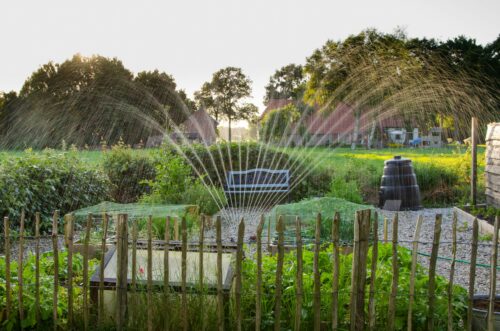Did you shut off your sprinkler system properly before the winter? You did? Great! Now it’s time to turn your irrigation system back on for the spring. As the weather continues to get warmer, you’ll want to ensure that your lawn is lush and green, and this requires a fully functioning sprinkler system.
Not sure how to start your sprinkler system for the spring season? There are a few things you’ll want to check before you turn the valve on and let the water flow, but it’s not as time-consuming or difficult as you might think.
Here are a few things you’ll want to check before starting your sprinkler system for the first time in the spring along with how to ensure that you’re irrigating your lawn correctly so it flourishes well throughout spring and summer.
What Tools Do You Need?
Before getting started, you’ll want to ensure that you have the right tools on hand to help you work efficiently. To restart your sprinkler system in the spring, we recommend that you have, at the very least:
- Gloves
- Flathead screwdriver
- Pliers
- Solvent cement (in the case of any major cracks or breaks in the pipes)
We recommend also bringing along a notepad and a pen or having your phone on hand to make quick notes regarding areas in your system that look a little worn down. You’re going to do a thorough check so it’s important that you make note of anything you see that looks a little off in case you need to consult a professional.
What to Check When Turning on Your Sprinkler System
1. Water Lines
First, you’ll want to look for any breaks in the main water lines. If you see water bubbling in certain parts of your lawn, this is a good indicator that there’s a leak in one of the water lines. Slick-WrapⓇ Pipe Repair kit can seal leaks or cracks in any type of piping system.
2. Sprinkler Heads
If you live in an area that receives heavy snowfall then your sprinkler heads might have been damaged under layer after layer of snow and ice. Or, similarly, they might have been stepped on and broken by people walking across your lawn who couldn’t see them due to the snow. Simply check each one to assess its condition and then reposition them if needed so that they’re watering your lawn or plants instead of your house or sidewalk.
3. Valves
Here, you’ll want to start by cleaning the valve box. This includes cleaning out any debris that might have accumulated over the past few months and making sure there’s no water inside the box. Do this before you turn on the water and then, when you do turn on the water, be sure to turn it on slowly to see if there are any leaks.
How to Start Your System
Now that everything’s checked, it’s time to start your system up again. Start by slowly opening the main shutoff valve to let water trickle through. Let the water flow thoroughly slowly as you go around your yard and check for cracks, bubbling, and any other major issues. If everything looks good, you should let your sprinklers run for about three to five minutes just to make sure water flows correctly, the sprinkler heads are working properly, and that there’s no issue with your water pressure.
If you see major issues, such as water spouting out from an area where it shouldn’t or a pool of water in one area of your lawn, you’ll want to shut off the water and go back around to check the three main components listed above.
Still having issues? It might be time to contact a professional. Get in touch and let us know what you’re having trouble with when starting your sprinkler system for the spring and we’ll recommend an expert as well as products to help!
About Weld-On
Weld-On Adhesives, Inc., a subsidiary of IPS Corporation, is the pioneer and leading manufacturer of Weld-On® solvent cements, primers and cleaners for PVC, CPVC, ABS and other plastic piping systems. Weld-On products are globally recognized as the premium products for joining plastic pipes and fittings. Headquartered in California, Weld-On has state-of-the-art operations throughout the United States, as well as China, and a worldwide network of sales representatives and distributors.

